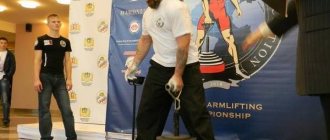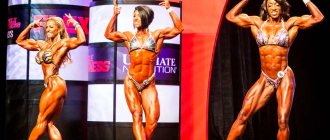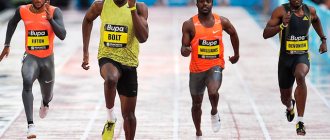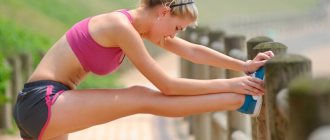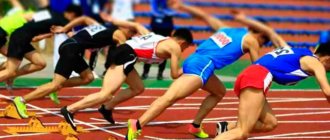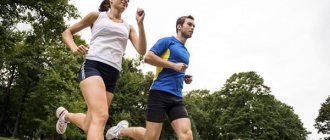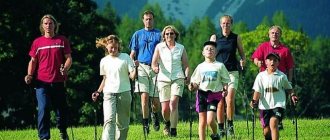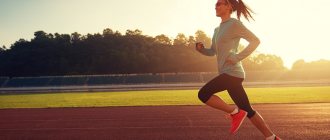Share with friends
Athletics is one of the oldest sports. Every year its popularity only grows. This Olympic sport is called the royal one, and for good reason. This direction contains all the main sports activities. Athletes who have been actively involved in athletics for many years are distinguished by good health, endurance, they are unusually fit, have a persistent character and fortitude. Like other sports, athletics has its own rules that all athletes must follow.
Types of disciplines in athletics
Athletics includes several areas: running disciplines (including runs and cross-country), race walking, technical events (jumping and throwing), all-around.
Most people associate athletics with running. The variety of running competitions in this sport is enormous. The location of the competition and its duration depends on the type of running.
Types of running disciplines
- Sprint. The distance can be: 60 m, 100 m, 200 m, 400 m.
- Middle distance running. The length of the distance is selected from 800 m to 3 km. This includes a steeplechase over a distance of 3000 m.
- Long distance running (from 3 km.)
- Run lasting 1 hour.
- Highway running. The distance is selected in the range from 5 km to 100 km. Road running can last for days.
- Cross (4-12 km).
- Hurdling. In this discipline, the athlete must run along his own track and overcome barriers. It can be carried out using distances: 60 m, 100 m, 110 m, 400 m).
- Relay race. This discipline uses a 4-time race: 100 m, 200 m, 400 m, 800 m, 1500 m. This includes ekiden - a running relay race.
Running sports are the most popular. Running is the basis of all sports training. Children are usually accepted into athletics from the age of 8-9 years. But a teenager usually chooses his main running direction by the age of 13.
Race walking
Race walking is a “close relative” of running. Some of these disciplines are confused. But they have a number of significant differences. When walking, your feet should almost always be close to the surface of the ground (path). When running, your feet rise quite high.
When holding competitions, in addition to speed, adherence to walking technique is of great importance. Judges strictly evaluate gait rules, failure to comply with which may result in disqualification.
Race walking is carried out on tracks of length: 10 km, 20 km, 30 km, 50 km. Road competitions are also held at distances of 20 and 50 km.
Technical disciplines
The technical disciplines of athletics get their name due to the fact that strict adherence to technique is required. This area includes long and high jumps, throwing heavy objects (discus, canvas, javelin) and shot put.
In addition to physical skills, the ability to use the technique of performing elements is very important in this area.
Jumps are divided into:
- — high jumps (over the crossbar);
- - high jump using a pole;
- - long jump;
- - triple jumps (consecutive in length).
The basics of athletics jumping are studied at school in physical education lessons. All these types of jumps are included in the Olympic Games.
All-around
This area includes several areas of athletics. These are, for example, competitions in running, long jump and javelin throwing.
The range of areas of athletics differs depending on the time (season) of the competition.
Summer heptathlon for women includes: hurdles (100 m), 800 m regular run, high jump, long jump, shot put, javelin throw, sprint (200 m).
The summer decathlon for men consists of the 100 m and 400 m sprint, long and high jump, pole vault, discus throw, javelin throw, shot put, 1500 m run, 110 m hurdles.
The winter season is slightly different from the summer season. Women perform exercises in winter: 60 m hurdles, 800 m regular run, high and long jump, shot put.
In winter, men compete in the 1 km run and 60 m hurdles, high jump and pole vault, and shot put.
You need to understand that the athlete does not have to complete all the necessary tasks immediately. All-around competitions take place over two days.
Brief history of the Olympic Games
Outside the stadium
- Road disciplines (half marathon, marathon and ultra marathon).
- Trail running.
Marathon
— 42 kilometers 195 meters. Yes, yes, the Olympic race can be held not only in the stadium, but also on the highway.
Over mountains and valleys: features of cross-country running
Half marathon
- as you understand, here the marathon distance is divided by two and is 21 kilometers and 97.5 meters. Races are held on the highway or within the city.
Ultramarathon
— distance 100 kilometers. It takes place in the format of a regular race.
Trail running
— in other words, running over rough terrain. Runners have to overcome hills, mountain passes, rivers, sandy areas and much more. And if the change in altitude along the route exceeds 1000 meters, the trail turns into skyrunning.
General rules of athletics
All rules of athletics are approved by the international athletics organization AIIF. First of all, all athletes who are involved in athletics in sections and plan to participate in competitions must be healthy and have no medical contraindications.
Athletes' clothing and shoes must be selected in accordance with the size of the participant in the competition, and they must be clean. There should be no foreign sharp objects, laces, ropes. It is prohibited to use any devices that can visually change the shoe size.
- Women compete with women, men with men.
- Athletes should not use prohibited drugs.
- There are age divisions: boys and girls (16 and 17 years old); juniors and juniors (18 and 19 years old).
- Before the start of the competition, participants are assigned and given numbers that are attached to the chest and back.
Classification of athletics sports
Athletics sports can be classified according to various parameters. Let's give a few examples.
Classification by gender and age: men's and women's competitions, standards for boys and girls.
By location: indoor or outdoor stadiums, highways or rough terrain.
For motor movements: running, walking, jumping, throwing and a combination of these exercises (all-around).
Domestic pedagogical literature suggests a division of athletics disciplines into classical (Olympic) and non-classical (all others). This approach corresponds to the division of all types of athletics into five main groups. Let's look at these groups.
Rules for conducting athletics competitions
Healthy people who have reached a certain age are allowed to participate in athletics competitions. Before the start of the event, athletes are examined by medical workers.
For short and medium distances there is a gradation: quarter-finals, semi-finals and finals. Long distances, race walking and cross-country have only finals.
When calculating timed competitions, the speed with which the athlete covered the distance is taken into account. The judge also awards points for technically correct execution of elements (jumping, throwing).
In addition to the requirements for the athlete, the competition venues are carefully checked. Paths and areas must be safe. Surfaces should not be slippery and should not have unnecessary objects.
What qualities does athletics develop?
A sports result in athletics is an evaluative indicator. It has a qualitative or quantitative dimension. You have to come running first, then throw or jump. A competitive approach stimulates physical development. A person’s physical capabilities are associated with the so-called conditioning and coordination abilities of the body.
Conditioning abilities (qualities) are a combination of 4 individual, physical (motor) characteristics: strength, endurance, speed and flexibility.
Coordination ability is the ability to use motor qualities and adequately rearrange motor activity in various situations. In the pedagogical literature, coordination abilities (qualities) are associated with the concept of dexterity.
Athletics exercises develop all physical qualities.
Strength qualities
Muscular strength is the ability to overcome or resist external resistance through muscular effort.
Strength training is a means of developing strength. In athletics, these are: sprinting, throwing, shot put and other “explosive” exercises.
Power loads solve two issues at once. Firstly, they increase energy consumption (ATP molecules). Secondly, they provoke hypertrophy (growth) of muscle tissue.
Endurance
Endurance is the body's ability to withstand physical fatigue. Endurance is best developed by long-distance running . Cross-country athletics increases lung capacity and strengthens the heart muscle.
Regular exercise helps the body adapt to stress. What seemed overwhelming yesterday becomes a normal burden today. This is how we develop and become stronger.
Speed abilities
Speed is the ability to perform motor actions in a minimum period of time for given conditions.
To develop speed abilities, training is carried out in which there is a sharp change in the intensity and direction of movements. Let's give a few examples. Outdoor games (relay races, football, basketball); running with acceleration and starts from various starting positions (high start, low); jumping rope and so on.
Flexibility
Flexibility is the ability to perform motor actions with maximum amplitude. Without moving joints and flexible ligaments, it is impossible to develop speed abilities. Therefore, special attention is paid to the development of flexibility in athletics.
Dexterity
This physical quality unites all motor abilities: speed, flexibility, endurance, strength. Agility is the ability to accurately, quickly and efficiently perform complex motor movements.
In athletics, agility is developed by such exercises as high jump, pole vault, hurdles, and steeplechase. They require special concentration and coordination of movements from the athlete.
Where are athletics competitions held?
Athletics training and competitions are held all year round. In the warm season, open-air stadiums are used. It is also possible to hold the event on the highway. The only thing is that all selected places must be fully equipped for the competition, with strict adherence to safety measures.
An open stadium has oval tracks of 400 m each. Usually there are 8-10 tracks around the stadium. There is also a special area for jumping and throwing.
An indoor stadium is used during the cold season. It usually has 4-6 separate oval tracks of 200 m each. The width of the track is 0.9 - 1.1 m.
Any stadium should be as convenient as possible for athletes and be safe.
Amateur running
We looked at professional disciplines. Now let's look at simple running options that are suitable for independent training.
Jogging or jogging
The most accessible and simplest type of jogging. Used to maintain health, as well as in weight loss programs as an effective physical activity.
Jogging - jogging at a speed of 7–9 km/h. Any distance, according to the wishes and goals of the athlete. As a rule, the training duration is 50–60 minutes. This time is enough for the body to use up glycogen reserves and use up fat deposits.
The peculiarity of jogging is that with minimal forward movement and a short “flight” phase, the athlete retains the beneficial properties of running at higher speeds. When conducting such classes, it is necessary to eliminate the following errors:
- sitting too tight on the legs;
- placing the foot on the heel without pushing with the toe;
- excessive forward lean.
All this reduces efficiency and accelerates leg muscle fatigue.
Posture running method
Originally developed by athlete and coach Nikolai Romanov, who trained the British triathlon team for the Olympic Games in 2000 and 2004. Romanov claims that his technique can improve performance in many disciplines.
https://www.youtube.com/watch?v=XoO3QKV3RQg
In Russia, a methodologist does not conduct seminars or train people. Therefore, you can find a complete description of his approach to training in the book “The Pose Method of Running.”
Let's look at the principles of movement along Romanov. The main thing is the pose (hence the name). Imagine a line running vertically through the top of your head, your pelvis, and the front of your supporting foot. Then create a slight fall forward and cross your other leg. Alternately changing limbs, you will move.
It is important that the feet should not extend beyond the pelvic line. The movement of the legs is reminiscent of pedaling a bicycle.
Running in place
Typically used as an alternative to street training. Allows you to strengthen the cardiovascular system, tighten body muscles, and burn calories at home. Can be used instead of morning exercises or for warming up during prolonged sedentary work. The benefits include improved digestion, as well as relief from depression.
There are different techniques for running in place:
- classical;
- with high hip lift;
- with choking of the legs.
By combining execution methods, you can control the load. To create a healing effect, it is better to “run” on the balcony or with an open window (in the warm season, of course). This will increase the filling of the blood with pure oxygen. To increase the load, we recommend using sand weights on the shins.
Running up the stairs
Used to strengthen leg muscles and lose excess weight. Additionally, ligaments, tendons, and small stabilizing muscles throughout the body are worked out. This allows for improved balance and coordination. The weight loss effect is explained by high calorie consumption due to the inclusion of large muscle groups in the work. Of course, you shouldn’t forget about following a low-carb diet.
For classes you will need stable sneakers with non-slip soles. Before you go to the entrance, you should stretch your legs well using a skipping rope or jogging in place.
If you are a beginner, start with fast steps for 15 minutes. In this case, the number of floors should be at least 4–5. After 6-7 such sessions, move on to easy runs. During your workout, keep your heart rate in the aerobic zone.
Running with weights
Additional weight may come in the form of shin pads or a special belt. Untrained athletes do not need such equipment. Beginners are advised to start with simple loads and gradually increase intensity. This is necessary so that the muscle tissue grows small capillaries and the ligaments are strengthened. A gradual increase in loads gives a positive effect in training.
Trained athletes use weights to better work out muscles and train the cardiovascular and respiratory systems. At the same time, the running technique remains the same.
We recommend using weight pads from 0.5 to 5 kg. Heavy projectiles can cause damage to the ligamentous apparatus.
Before using leg weights, be sure to stretch your knee joints.
Interval running
The most effective way to burn subcutaneous fat. Interval training involves alternating periods of intense running with periods of active recovery. Example of an interval program lasting 20–25 minutes:
- 100 m - jogging;
- 100 m - acceleration;
- 100 m - fast step;
- the circle repeats.
This method of training is not recommended for overweight people and beginner athletes, as it strains the heart.
In addition to losing weight, the benefits of interval running are increasing endurance, strengthening body muscles, and accelerating metabolic processes. Classes last no more than 30 minutes. Thanks to varied loads, during this time the body has time to use up glucose reserves and begin burning fat. The interval method is also used on cardio equipment (orbitrack, bicycle ergometer, treadmill).
Fartlek
System developed by Swedish trainer Guest Helmer. In fact, it is a variation of interval training. Can be used not only in running activities, but also in other disciplines (rowing, swimming, etc.). If we consider fartlek as a jogging technique, then it will be based on intense stages, between which recovery breaks are made. The duration of the workout is 35–40 minutes.
The difference between fartlek and standard interval training is the rest time. In fartlek, recovery lasts 3-4 times longer than the period of exercise. The rest is the familiar interval running.
Advantages of this type of training:
- reduction of fat layer;
- strengthening the cardiovascular and respiratory systems;
- tightening problem areas in women;
- improvement of general well-being and mood.
Cross
Running training on rough terrain (a piece of land with difficult terrain for movement). Thanks to the fresh air, cross-country running is considered the best form of running for health. An uneven surface forces an athlete to expend more calories when moving, which has a positive effect on weight loss. And the supply of pure oxygen improves lung function and improves mood.
Since the athlete moves off-road, the risk of twisting the foot increases. To avoid injury, before the cross-country it is necessary to warm up the muscles and joints of the legs well.
The training itself usually lasts from 40 minutes to 1.5 hours. The jogging speed is slightly higher than the jogging pace. Choose specialized shoes for cross-country. Hiking shoes with moisture-wicking features are best.
Shuttle run
High-speed movements with constant changes of direction. Typically, the athlete moves between two points - forward and backward. The number of runs in each direction is determined by the purpose of the lesson. The pace of shuttle running is maximum. The athlete accelerates to the end of the designated segment, then turns around and runs in the opposite direction. At each point you need to touch the floor with your hand to fix the position.
https://www.youtube.com/watch?v=CmbSkW8ycgI
The benefits of such runs:
- development of “explosive” force with the legs;
- increasing speed characteristics;
- muscle strengthening;
- burning subcutaneous fat;
- improved coordination and balance of the body.
If you want to do shuttle running, we recommend that you first practice your movement technique by light jogging back and forth, touching the floor at each point. This will help the muscles adapt to the load faster.
Rogaine
A type of active recreation, an analogue of orienteering. Competitions are held in both team and individual competitions. The participants’ task is to get as many points as possible, which are awarded for completing stages of the distance. The main difference between rogaining and orienteering is that runners know in advance where the control points are located and plan the route.
The duration of Rogaine starts from 3 hours and goes up to a day. The main type of movement is running. Competitions are also held for older people. In this case, running is replaced with Nordic walking.
Rogaine has similar effects on the body to cross-country sports. Athletes receive high-quality physical activity, burn subcutaneous fat, and improve their overall well-being due to frequent inhalation of pure oxygen.
How to learn to run long distances
If you want to learn to run to improve your health, don’t think about speed and distance. Focus on the duration of the run.
Start with short sections. The first run should not take more than 15 minutes. Gradually increase the distance. Increase your running duration to 40–60 minutes. When this load becomes insufficient, switch to interval running .
If you decide to run to lose weight , combine different types of running.
Marathon 42195 m.
The marathon is part of the athletics discipline. The distance is 42195 meters .
Highway marathons are held. The best marathon time among men was set by a Kenyan athlete in 2014 in the marathon, which took place in Berlin (2:02.58). Paula Radcliffe holds the female marathon record. In 2003, she was able to set a record in the London Marathon, running the distance in 2:14.25.
